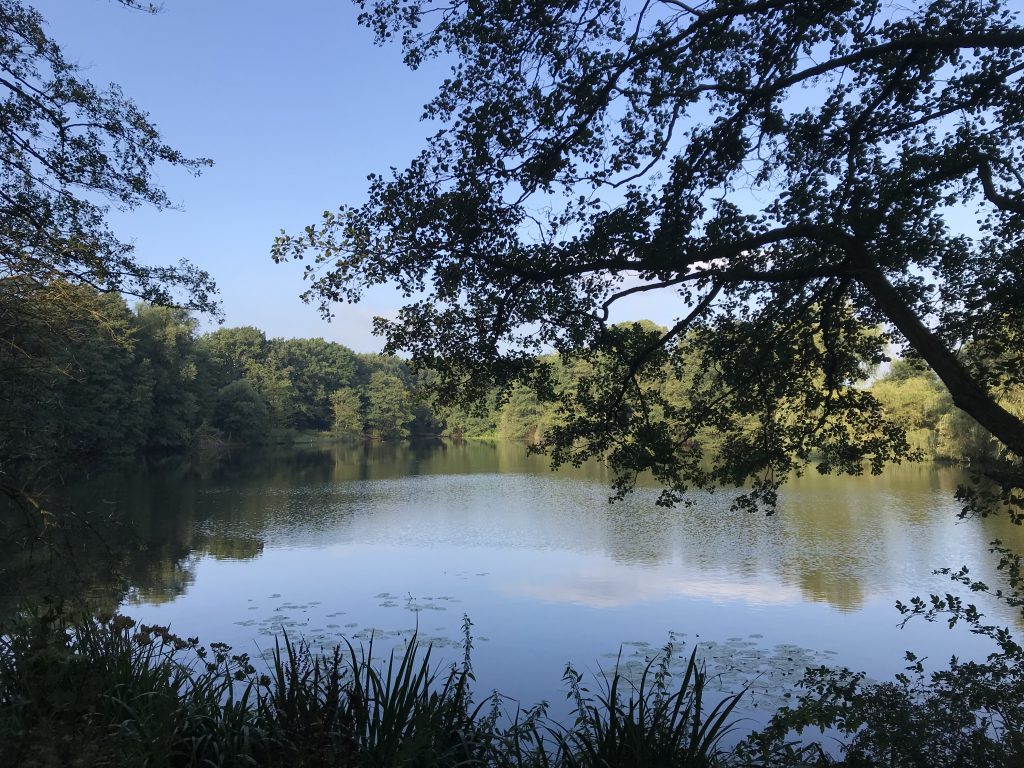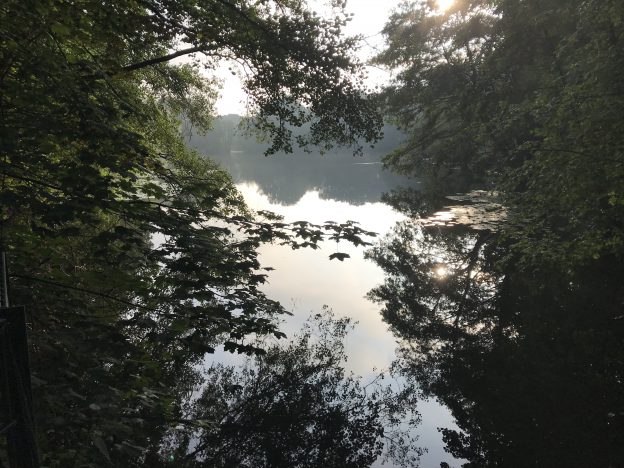The picture above I thought was too pretty to not put on my blog (because my blog’s main function to me is still my personal brain dump), but the picture below is actually interesting from a physics point of view.
In the middle of the lake, the surface looks a lot rougher and crumpled than the water surrounding it. That’s because there the light breeze is generating small capillary waves, whose restoring force is surface tension. But if we look closely towards the lower edge of the “crumpled” area, we see that the water isn’t as calm and the surface isn’t as flat as they appeared to be on first glance — there are longer waves propagating out of the crumpled area. Those waves are gravity waves, and they can propagate for longer distances without having constant new energy input by the wind.

But why doesn’t the crumpled area that is directly influenced by the wind extend all the way to the shore? Of course, on one side of the lake it would be sheltered from the wind by the trees and other things growing there. But on the other side, it’s in a way sheltered by the trees, too, even though the mechanism there is different. There, we don’t have wind until the very edge of the lake, because the current of air is deflected upwards by the trees, so an area of low velocity is formed, kind of like the area surrounding a stagnation point in an idealized model.
